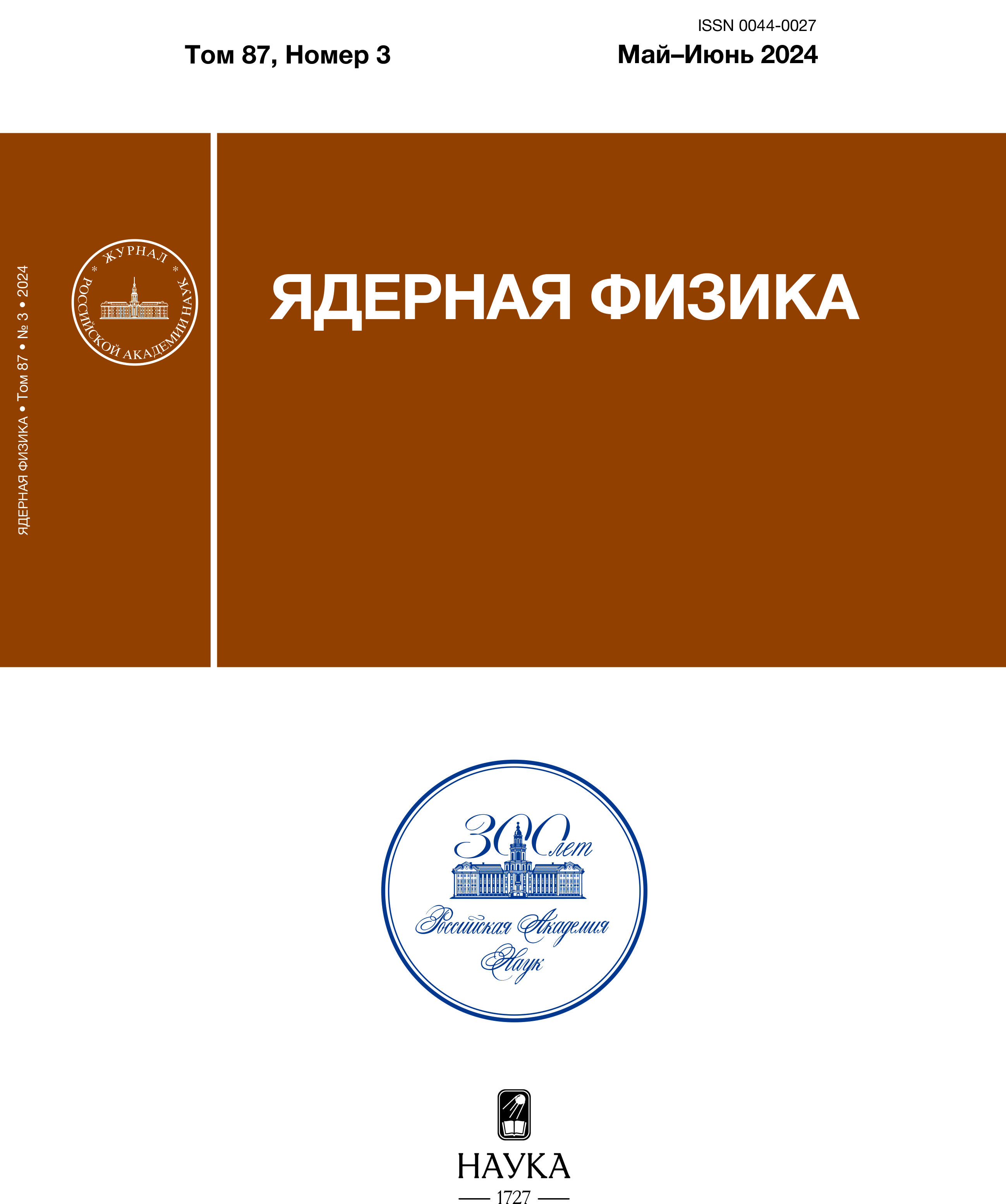RADIAL AND TANGENTIAL FRICTION COEFFICIENTS: DERIVATION OF FORMULAS, CALCULATION AND APPLICATION IN MODELLING OF THE HEAVY ION COLLISION PROCESS
- Autores: Litnevsky V.L.1, Litnevsky A.L.2,3, Kosenko G.I.4
-
Afiliações:
- Omsk State Transport University
- Peter the Great St. Petersburg Polytechnic University
- Almazov National Medical Research Centre
- Omsk Tank Automotive Engineering Institute
- Edição: Volume 87, Nº 3 (2024)
- Páginas: 263-273
- Seção: ЭЛЕМЕНТАРНЫЕ ЧАСТИЦЫ И ПОЛЯ. Теория
- ##submission.datePublished##: 15.06.2024
- URL: https://filvestnik.nvsu.ru/0044-0027/article/view/674731
- DOI: https://doi.org/10.31857/S0044002724030151
- EDN: https://elibrary.ru/IVXNQJ
- ID: 674731
Citar
Texto integral
Resumo
A method for calculating the forces and moments of friction forces arising between two colliding nuclei with a non-zero impact parameter is considered. At this stage of the work, it was assumed that colliding nuclei remain spherical throughout the entire collision process. A simulation of the collision process of spherical atomic nuclei is carried out, taking into account their gradual inclusion in rotation around their own axes. It is shown that from the moment of the transition of the system through the Coulomb barrier to the stop of the relative rotation of colliding nuclei, it takes time about 10–21 s. It is proposed to consider the stopping of radial motion and relative rotation of colliding nuclei as conditions for capturing the projectile nucleus by the target nucleus. I.e., at the moment of capture, the system should behave like a rigid rotating dumbbell. Comparison of the results of the calculation of the capture cross sections with experimental data shows a good predictive power of the considered approximate model in the case of a strongly asymmetric reaction of 16O+ 208Pb (for all reaction energies) and in the case of high-energy reactions of 36S + 208Pb and 40Ca + 208Pb.
Sobre autores
V. Litnevsky
Omsk State Transport University
Email: vlad.lit@bk.ru
Omsk, Russia
A. Litnevsky
Peter the Great St. Petersburg Polytechnic University; Almazov National Medical Research Centre
Email: a_lit@list.ru
St. Petersburg, Russia; St. Petersburg, Russia
G. Kosenko
Omsk Tank Automotive Engineering Institute
Email: kosenkophys@gmail.com
Omsk, Russia
Bibliografia
- C. Shen, Y. Abe, D. Boiley, G. Kosenko, and E. Zhao, Int. J. Mod. Phys. E 17, 66 (2008).
- G. I. Kosenko, F. A. Ivanyuk, V. V. Pashkevich, and D. V. Dinner, Phys. At. Nucl. 71, 2052 (2008).
- V. L. Litnevsky, V. V. Pashkevich, G. I. Kosenko, and F. A. Ivanyuk, Phys. Rev. C 89, 034626 (2014).
- V. V. Volkov, Phys. Part. Nucl. 35, 425 (2004).
- P. Frobrich, Phys. Rept. 116, 337 (1984).
- J. Marten and P. Frobrich, Nucl. Phys. A 545, 854 (1992).
- G. H. E. Gross and H. Kalinowski, Phys. Rept. 45, 175 (1978).
- A. V. Karpov and V. V. Saiko, Phys. Rev. C 96, 024618 (2018).
- Г. Д. Адеев, А. В. Карпов, П. Н. Надточий, Д. В. Ванин, ЭЧАЯ 36, 732 (2005).
- E. G. Ryabov, A. V. Karpov, P. N. Nadtochy, and G. D. Adeev, Phys. Rev. C 78, 044614 (2008).
- В. Л. Литневский, А. Л. Литневский, Г. И. Косенко, Ф. А. Иванюк, ЯФ 85, 296 (2022).
- V. L. Litnevsky, F. A. Ivanyuk, and G. I. Kosenko, Izv. Saratov Univ. (N. S.), Ser. Phys. 20, 233 (2020).
- R. S. Kurmanov and G. I. Kosenko, Phys. At. Nucl. 77, 1442 (2014).
- R. Yanez, W. Loveland, A. M. Vinodkumar, P. H. Sprunger, L. Prisbrey, D. Peterson, S. Zhu, J. J. Kolata, A. Villano, and J. F. Liang, Phys. Rev. C 82, 054615 (2010).
- A. J. Pacheco, J. O. Fernandez Niello, D. E. DiGregorio, M. di Tada, J. E. Testoni, Y. Chan, E. Chavez, S. Gazes, E. Plagnol, and R. G. Stokstad, Phys. Rev. C 45, 2861 (1992).
- E. Vulgaris, L. Grodzins, S. G. Steadman, and R. Ledoux, Phys. Rev. C 33, 2017 (1986).
- C. F. Tsang, Phys. Scripta 10A, 90 (1974).
- A. S. Iljinov, M. V. Mebel, N. Bianchi, E. De Sanctis, C. Guaraldo, V. Lucherini, V. Muccifora, E. Polli, A. R. Reolon, and P. Rossi, Nucl. Phys. A 543, 517 (1992).
- T. I. Nevzorova and G. I. Kosenko, Phys. At. Nucl. 71, 1373 (2008).
- V. L. Litnevsky, V. V. Pashkevich, G. I. Kosenko, and F. A. Ivanyuk, Phys. Rev. C 85, 034602 (2012).
Arquivos suplementares










